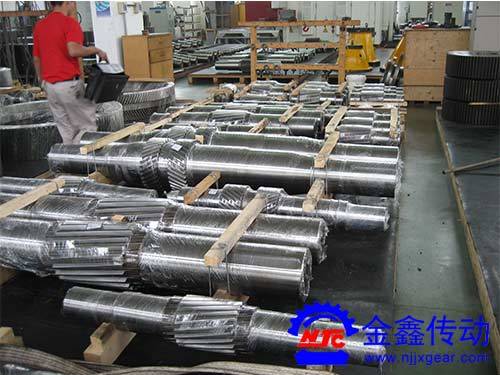The shaft in gear box can be divided into active shaft, driven shaft and intermediate shaft according to its active and passive relations. The outermost part of the head active shaft and final driven shaft is used to install the half coupling, which is connected to the rotor hub of the rotor or motor drive shaft. In order to improve reliability and reduce external dimensions, a semi-coupling (flange) is sometimes made into a combination with the shaft. The journal of the mating parts of the shaft shall be ground. In order to reduce stress concentration, necessary treatment should be done to the transition rounded Angle and spline to the larger axis diameter of the shaft, such as polishing, to improve the fatigue strength of the shaft. In order to reduce stress concentration at the edge of the hub, the diameter at the pressure joint should be 5% larger than that of the adjacent parts, or the unloading groove should be opened on the hub. For the part mounted on the shaft, the axial fixation shall be reliable, and the load shall be supported as far as possible by the thrust shoulder of the shaft, and the fixed in the opposite direction may be supported by nuts or other fasteners. In order to prevent thread loose, it can be used to check washer, double nut washer, locking screw or series wire. Sometimes the spring retainer can be used to replace the nut and stop washer in order to save space and simplify the structure, but it cannot be used where the axial load is too large.

The material of the shaft is carbon and alloy. For example, 40, 45, 50, 40 cr, 50 cr, 42CrMoA, etc., the commonly used heat treatment method is to carry out the quality adjustment, while the important parts are to be quenched. High quality low carbon alloys such as 20CrMnTi, 20CrMo, 20MnCr5, 17CrNi5 and 16CrNi can be used for carburizing and quenching to obtain higher surface hardness and higher toughness of the heart.



